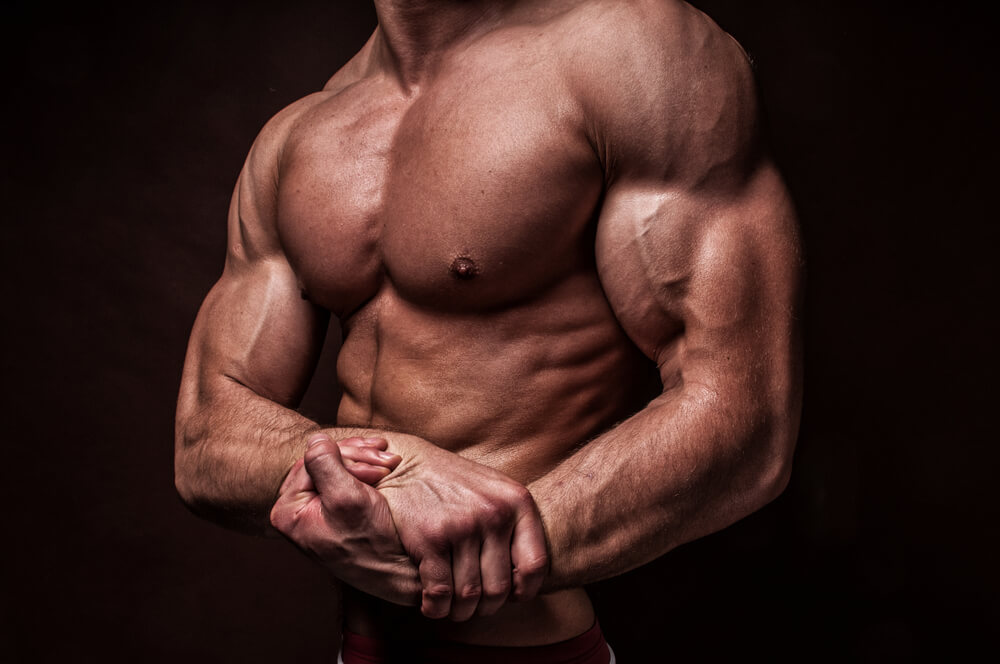
It’s Spring, which means every single time you walk into Target the bathing suits are front and center. So whether you want to think of it or not, time’s fast approaching where you’ll be rocking less clothing while at the pool, the beach, or checking yourself out in the bathroom mirror.
Wherever the lack of clothing comes into play, you probably want to look your very best.
After all, there’s nothing like turning heads while strutting around shirtless, in a bikini or however else you like to take in the summer weather.
But you don’t want to just be the skinny guy or the shapeless gal. Let’s face it, anyone can do that. Cutting down calories just to drop pounds really isn’t that difficult. It might take some willpower, but it’s not complicated. Now, if you want to drop fat while building muscle, that’s a different story.
Lose Fat Gain Muscle Steps For Success
But how do you build one while blasting the other into oblivion?
We’ve got all the answers and advice for you right here.
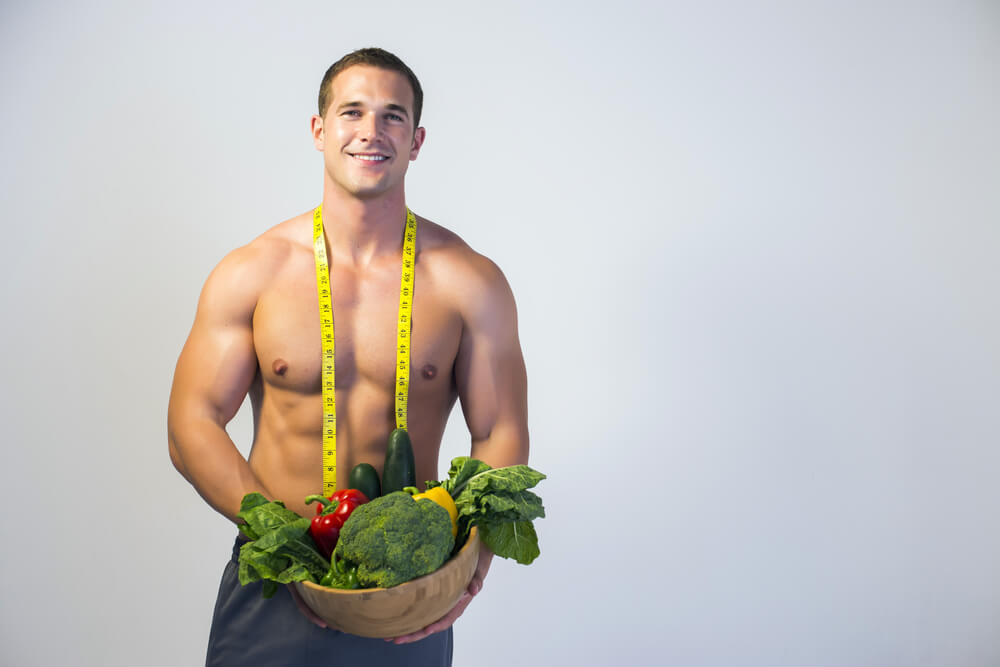
Your Diet Plays A Huge Role
Okay, let’s look at the diet first. We’ll cover supplements and other additional dietary options a bit later. Here we want to just look at what to eat and what to avoid. Your body, your abs and everything else is made in the kitchen. You’ve probably heard that saying before, but it really is true. Dropping weight without the right diet is difficult (unless you’re an Olympic swimmer and need to consume 10,000 calories a day). Putting on muscle without the right diet is downright impossible.
So here are the basics.
First, you’ll need to cut calories.
Plain and simple.
The only way to drop weight is to use more calories than you bring in.
So what about some of those diets that say you don’t need to count calories?
Well, it still is the same principle of burning through more calories than you take in, but these diets are generally based on higher amounts of protein and fiber, so you feel fuller and won’t eat as much. Basically, by following those kinds of diets, as long as you listen to your stomach, you don’t need to count.
Cutting calories doesn’t need to be difficult though. If you eat the right foods you’ll drop calories without a problem. Start with lean protein. Turkey is fantastic. Nearly any kind of fish is exceptional as well. Chicken is fine, and even some lean cuts of beef. Combine this with as many veggies as you want. Veggies will have the added nutrients and vitamins you need. It also comes with fiber, which helps keep you feeling fuller longer (while also removing some of the added carbs you may not want). A high protein, low-calorie diet is perfect for giving your muscles material to grow while cutting down on your calories as well (WebMD, 2018).
So, Wait, Are Carbs Bad?
Remember back in the 90s when eggs were basically the worst thing you could eat?
People would say it has too much cholesterol and eating eggs would lead to your heart exploding. Turns out that really isn’t the case (probably just the milk and cow guys trying to boost sales by throwing shade and the chicken and egg guys). Well, there always has to be something that takes the majority of dieting hate. Carbohydrates become exactly that.
You’ll see commercials talking about carbs, beer TV spots telling you the “more taste, less filling” beer has fewer carbs than the other options (hate to tell it to you, but if you’re on a no carb diet, beer should not be your drink of choice).
So what’s the deal with carbs?
Why the hate, and what is its place in a diet for dropping fat and boosting muscle mass?
Here’s the down low on carbs. Carbs are sugar. Simple carbohydrates are sugar, such as that found in ice cream, cereal and really anything else with added sweetening. Complex carbs are not processed. This includes 100% whole wheat bread, brown rice, carbs in beans and so on. This is the starting point for where people begin to dislike carbs. Because sugar is a form of carbohydrates, and sugar, when not used for energy, converts into fat, it’s seen as a negative. Complex carbs are often grouped into this category as well. Complex carbs do have more dietary benefits, although the carbs, like simple carbs, may end up as fat if not used. Complex carbs take more time to digest though so it remains an available energy source for longer (Diabetes UK, 2018).
Diets like the Atkins diet focuses on removing as many carbs as possible. By doing this, the body doesn’t have carbs to burn as energy and turns to fat instead. Realistically, this is a viable option for burning calories and dropping pounds. However, keep in mind that the Atkins diet supports eating unlimited fatty meats. This is not recommended if you have a heart condition (or family history of heart conditions).
Additionally, if you’ve ever eaten a carb-heavy meal (like that never-ending pasta option at the local “Italian” restaurant), you know all too well that bloated belly feeling. That’s not simply from what you just ait. Eat carbs forces your body to retain water. For every gram of carb, you eat your body retains around four grams of water.
You shouldn’t be afraid necessarily of carbs.
Complex carbs is an excellent energy source prior to working out. Without carbs or fat for energy, your body will turn to the protein you take in, which reduces the protein you have to build muscles. In general though, if you want to build muscle and lose weight, a high protein with lower calorie and lower complex carb diet is the way to go.
Just don’t be afraid to consume something like brown rice for sustained energy.
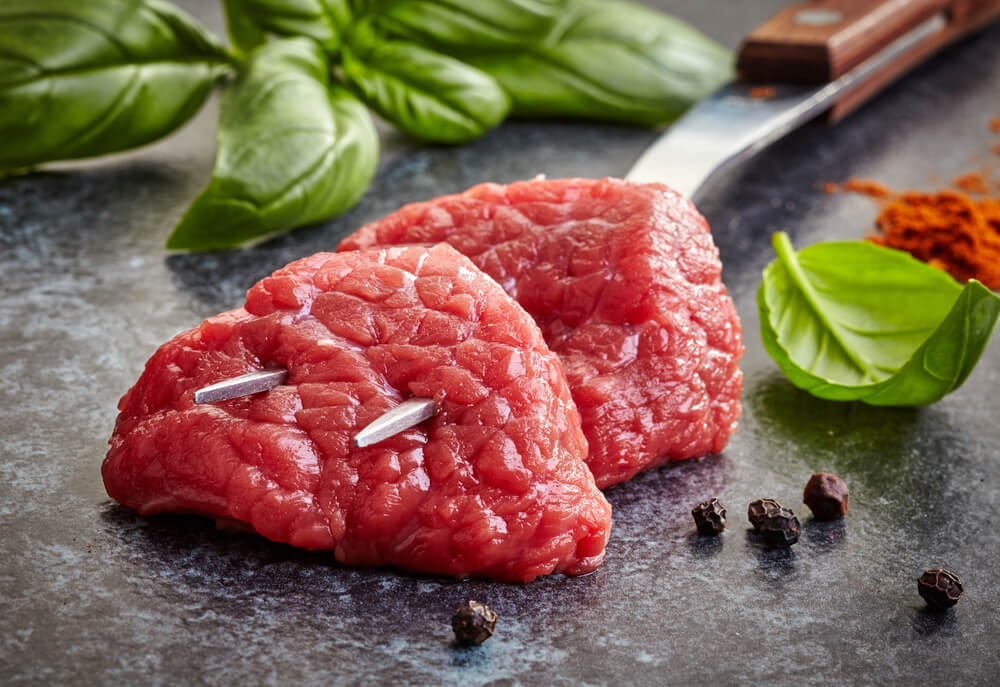
How Much Protein?
You need protein to build muscle. But how much?
After all, your body can only process so much of anything. You don’t want to be dropping big bucks on protein powder only to have it completely pass through. That would be like driving around on a turnpike for the fun of it. According to WebMD (2018), the general amount of protein the average man needs of 56 grams. The average amount a woman needs is 46 (boosted to 71 if she’s pregnant or breastfeeding).
But you don’t want to just maintain your current body structure.
You want to build muscle, and 56 grams of protein isn’t going to cut it. You may find some publications say to limit your protein intake. These publications don’t take into account your active lifestyle and need to build muscle. You don’t want to be eating 120 grams of protein if you just sit around all day. Yes, then it’s too much.
However, if you’re tearing down your muscle fibers, you need more fiber to repair the muscle tissue, which means you need more protein.
According to recent research published in The American Journal of Clinical Nutrition (2016), consuming 2.4 grams of protein per kilogram of body fat will help you not only build more muscle but drop more fat than if you consumed 1.2 grams of protein per kilo of body fat. If you’re not sure about the kilo to pound conversion, 1 kilo is about 2.2 pounds. So basically you want 1.2-1.4 grams of protein per pound for optimal muscle growth and weight loss.
When you consume your protein is important.
You can’t just binge on 120 grams of protein in one sitting and call it good.
Your body can’t process that much protein all at once. Instead, you need a steady, continual source of protein. So, focus on eating four meals a day with around 20 grams of protein each. This knocks you up to 80 grams right there.
Prior to working out, you want about 25 or so grams of protein, and then another 25 grams following the workout. This pushes you up to 130 grams for the day. Prior to going to bed, you want to drink an easy to digest protein drink (whey is excellent as its easy on your stomach). Giving your body protein to use during sleep is critical.
The majority of muscle repairing takes place while you’re at rest, so having a readily available protein source is essential. With another 20 grams or so before bedtime, you’re right at 150 grams of protein.
Mix in some random snacks throughout the day (we love low-fat string cheese, unsalted almonds and such) and you’ll be right at where you want to be protein wise, all while properly stretching out protein consumption, keeping your metabolism up and reducing calorie intake.
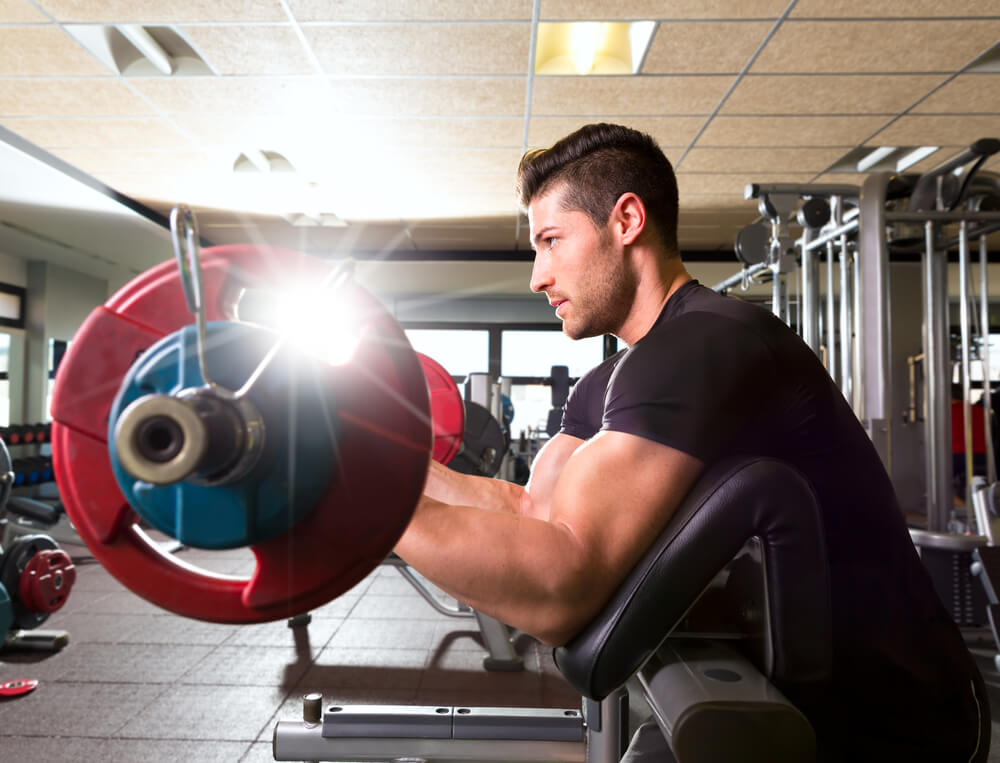
Your Workouts Need To Be Structured Properly
We’ve got plenty of workout tips in other blogs, so check out exact workout routines for targeted areas of your body.
However, one of the most important steps (and most common mistakes) is giving your body enough time to recover.
The old upper body routine of Monday/Wednesday/Friday is not good because it only gives you a full day of rest. Your muscles are still recovering. Instead, you want at least two full days in between muscle groups. So, on Monday, do back and chest. Tuesday, do shoulders and arms. Wednesday does lower body. Now repeat.
In terms of reps and sets, you want to focus on 8-12 reps (3-4 sets)for optimal muscle gain. If you workout at home and you don’t have enough weight, slow down your reps. Instead of blowing through the reps, go slow. Count to two going up, count to two holding the weight, lower your weights on a two count and hold it at the start (don’t rest the weight) for a two count.
Additionally, if you want to really kill your workout but are on a budget, pick up bands and use the bands with your weights.
So combine a curl with bands and a curl with dumbbells. This ensures optimal tension throughout the entire lift, causing more damage to your muscle tissue and increasing the potential for muscle growth (Mayo Clinic, 2015).
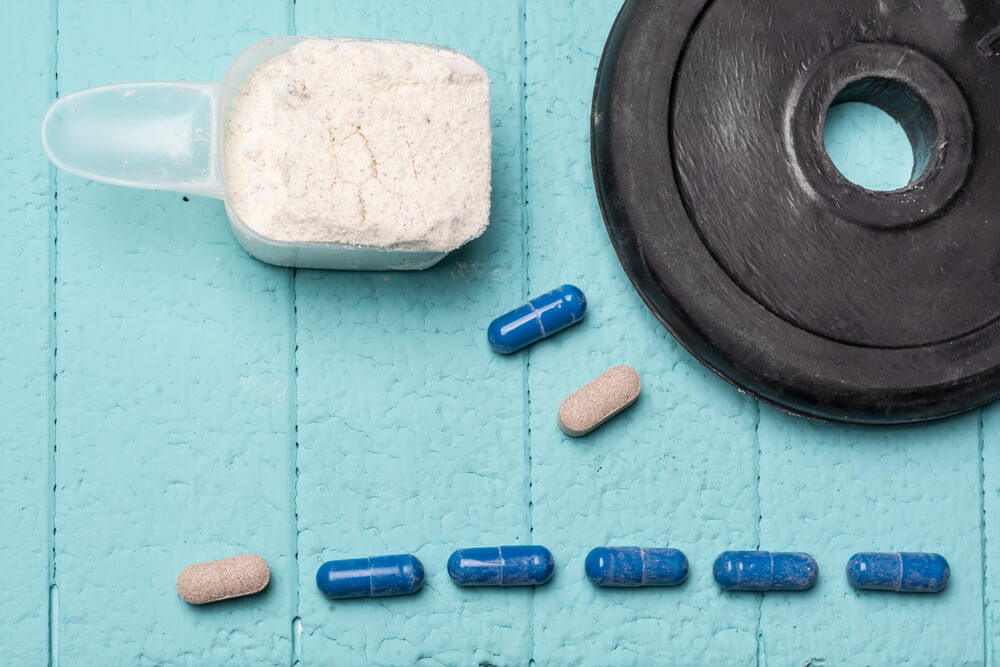
Supplements Can Help You Gain Muscle & Lose Fat
Supplements are a vital part in boosting your muscle size and helping you drop weight. Often these work hand in hand. Now, we’ve got several great blog posts regarding different supplements in-depth, so for additional insights into each supplement, make sure to check those out.
Now, in general, we will recommend a few different dietary supplements to your body.
And, as always, these are supplemental to your workout and weight loss. You will get out of it what you put into it. For starters, you want protein powder. Whey protein is inexpensive, easy to digest and a great addition to your diet. Creatine is a must as well. Your body naturally produces creatine as a fast-energy source for explosive movements.
With it, you’ll be able to squeeze out more reps, which furthers your muscle breakdown and assists in building muscle. BCAAs are amino acids that assist with muscle recovery. These will help build up your muscles faster following a workout (WebMD, 2018).
In terms of stripping away the fat, as you’re eating a high lean protein, low calorie and lower carb diet, you don’t need the fat blockers. Instead, go for the fat burners, which will help increase your metabolic rate and burn even more calories per workout.
Conclusion
Putting on muscle while shedding fat doesn’t need to be complex. It does take determination, focus, and the right diet. We also can’t stress enough to stop looking at the scale.
Toss that bathroom scale into the trash as it’s not going to help you out at all (but it will stress you out). You’ll see the changes in your body over time.
From the vein in your shoulder, you’re starting to see to the harder angle in your calf and the hardening of your back, progress in putting on muscle and dropping fat is about the little visuals you see and the small changes you discover in your body and not what some mechanical scale tells you. Just keep up the hard work.
Soon, you’ll be right in the thick of that Target bathing suit section, looking for the right design to show off your new body.
-Terry Asher
Terry Asher
Latest posts by Terry Asher (see all)
- Better Family – Product Review Liquid Daily 2 oz - Dec 16, 2024
- Post-Workout Recovery: The Key to Optimal Performance - Nov 25, 2024
- Pre-Workout Supplements – Everything You Need To Know - Nov 18, 2024









[…] via- https://gymjunkies.com/how-lose-fat-gain-muscle/ […]
Great advice sir.i need to follow this one.i am doing gym in my home.i am doing gym 6 days.although I have severe asthma.but gym is my life.
Thanks Debashis!
-Terry Asher
He looks very healthy and the body is very beautiful, I like it, thank you for sharing
[…] not all exercises are created equal when you want to burn fat fast. There are a handful of workout options you will want to consider to really maximize your ability […]
[…] not all exercises are created equal when you want to burn fat fast. There are a handful of workout options you will want to consider to really maximize your ability […]
Excellent article. Very interesting to read. I really love to read such a nice article. Thanks! keep rocking.